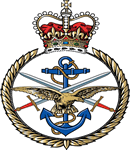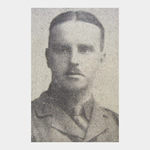Commemorated: | |||
| 1. Memorial: | Royal Irish Rifles Graveyard | IV. H. 4. Laventie | |
| 2. Book: | The (1921) Masonic Roll of Honour 1914-1918 | Pg.121 | |
| 3. Memorial: | The (1940) Scroll - WW1 Roll of Honour | 46A GQS | |
Awards & Titles: | |||
Family :
Son of Daniel and Rhoda Drew, of Burnley.Service Life:
Campaigns:
- The First World War 1914-1918, World-wide.
| Unit / Ship / Est.: 2/Cameronians (Scottish Rifles) |
| Action : The Battle of Neuve Chapelle and subsidiary actions |
Following a winter in the trenches the BEF was prepared to take the offensive against the Germans. The location was Neuve Chapelle, a small village in the front line below Aubers Ridge near Lille. Aubers Ridge was a low but significant hill and the intention at Neuve Chappell was to punch through the German front line, occupy the ridge and exploit with cavalry. It was a battle fought by two Corps of the BEF, the Indian Corps and IV Corps both largely consisting of regular battalions. It was to be preceded by the most violent artillery barrage of the war to date. Unfortunately in what was to be the start of the 'learning curve' for the BEF the artillery barrage, whilst violent, failed in some parts ? a failure that was to be costly and which delayed the assault and allowed the Germans to recover. Whilst the men were exceptionally brave they became bogged down as German machine guns and artillery stopped the momentum of the assault and by the end of the first day (10th March 1915) they were digging in. The following day the assault was repeated with fresh battalions but with no success. By the 12th March the Germans had recovered their poise, had brought in reserves and were ready to counter attack.
Neuve Chapelle (10-12 March 1915) was the first planned offensive battle by the BEF in France and achieved limited tactical success but not the expected breakthrough. It highlighted the problem of delay in execution that allowed the defending Germans to regroup, often consequent on small incidents and errors. Having stabilised the situation following the German sweep into France and the counter attack that eventually established static trench warfare on the western front, there was significant pressure on Britain to take a share of the burden from the French (who had without question had born the brunt of the fighting). Although the battle was effectively over by 12th March, the official battle nomenclature included actions in other sectors up to 22 April 1915 including the significant actions at St Eloi and at Hill 60 (Ypres).
Detail :
There is a memorial to Alan DREW at Mostyn House School, Parkgate, Cheshire which reads: ALAN APPLEBY DREW LIEUTENANT IN THE CAMERONIANS, FORMERLY BOY AND MASTER HERE, WHO FELL FIGHTING AT NEUVE CHAPPELLE MARCH 12TH 1915. AGED 30. THE BOYS OF THIS SCHOOL WHO KNEW AND LOVED HIM, HAVE PUT UP THIS PLATE IN THE PLACE WHERE, NOT ONLY WITH HIS LIPS BUT IN HIS LIFE HE TAUGHT HIS MASTER'S LOVE. DREW, ALAN APPLEBY, Lieutenant, 4th (Reserve), attached to 2nd. Battalion The Cameronians (Scottish Rifles). Younger son of the late Daniel Drew, of Lowerhouse Rurnley, a partner in the Lowerhouse Printing Works. Educated at Charterhouse, 1904-7. He left England in 1907 to go into business with a firm of merchants in Shanghai. On the outbreak of war he volunteered for foreign service, was gazetted 2nd Lieut, to the Cameronians, in Sept. 1914, and promoted Lieutenant on 4 November 1914. He left England on 13 February 1915 to join his regiment at the Front, and was killed in action, 10 March. 1915. (Note that the school memorial gives an incorrect date of death). He was not married. Following a winter in the trenches the BEF was prepared to take the offensive against the Germans. The location was Neuve Chapelle, a small village in the front line below Aubers Ridge near Lille. Aubers Ridge was a low but significant hill and the intention at Neuve Chappell was to punch through the German front line, occupy the ridge and exploit with cavalry. It was a battle fought by two Corps of the BEF, the Indian Corps and IV Corps both largely consisting of regular battalions. It was to be preceded by the most violent artillery barrage of the war to date. Unfortunately in what was to be the start of the 'learning curve' for the BEF the artillery barrage, whilst violent, failed in some parts - a failure that was to be costly and which delayed the assault and allowed the Germans to recover. Whilst the men were exceptionally brave they became bogged down as German machine guns and artillery stopped the momentum of the assault and by the end of the first day (10th March 1915) they were digging in. The following day the assault was repeated with fresh battalions but with no success. By the 12th March the Germans had recovered their poise, had brought in reserves and were ready to counter attack.
Masonic :
| Type | Lodge Name and No. | Province/District : |
|---|---|---|
| Mother : | Charterhouse Deo Dante Dedi No. 2885 E.C. | London |
Initiated | Passed | Raised |
17th May 1911 | 18th October 1911 | 15th May 1912 |
Source :
The project globally acknowledges the following as sources of information for research across the whole database:
- The Commonwealth War Graves Commission
- The (UK) National Archives
- Ancestry.co.uk - Genealogy, Family Trees & Family History online
- ugle.org.uk - The records of the United Grand Lodge of England including the Library and Museum of Freemasonry
Additional Source:
- Founder Researchers : Paul Masters & Mike McCarthy
- Researcher : Bruce Littley

